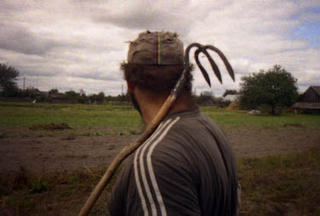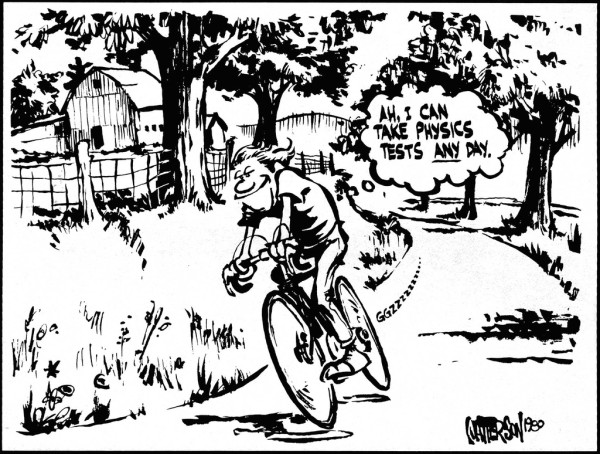Polish man Reszpondek faces life for murdering 'Tati'
From: The Leader
THE Polish cheese-cutter found guilty of murdering Ermatati Rodgers of Wrexham now faces a mandatory life sentence.
Lukasz Reszpondek showed no emotion as the majority verdict was announced in Mold Crown Court yesterday.
Sentencing was adjourned until Friday.
Mr Justice Lloyd Jones told him: “You will know that by law there is only one sentence for murder and that is life imprisonment.”
The 11-strong jury took seven hours and 17 minutes to convict the defendant by a majority of ten to one at the end of the three week trial.
After the verdict, the officer who led the inquiry branded Reszpondek as determined and cold, and said he had done everything he could to protect himself.
“All he was concerned about was self-preservation, not the recovery of Tati’s body or the feelings of her family and friends,” said Det Chief Insp Wayne Jones.
The court heard how he strangled her and buried her – but 14 months later tried to dig her up again as police closed in on him.
Reszpondek spent three hours digging with a spade, a fork, and his bare hands but he could not recover the body.
So, in the early hours one day in March he went to police to tell them where the body was – and claimed she had simply dropped dead of natural causes at his home.
He buried the woman in panic, he claimed. But the jury rejected his story and found that he had murdered her and then disposed of the body in a bid to get away with the crime.
The court heard how 41-year-old Mrs Rodgers, known as Tati, who lived in Gwersyllt, was missing for 14 months before her body was eventually found by police at a beauty spot at Erddig in March.
Police had set up covert cameras in the countryside and watched the defendant visit the shallow grave. He claimed he went there to pray.
But after a long operation the police changed tactics to try and spook the defendant to lead them to the body – and it worked.
Prosecuting barrister Michael Chambers, QC, said that quite simply innocent people did not bury bodies.
He then set about disposing of the body and might well have got away with it if he had not made certain fundamental errors, the prosecutor claimed. Using his credit card, which police were able to trace, he bought a spade, a large suitcase and other items used to help him bury the body.
Secondly, he buried her body in clay which had the effect of preserving the body.
Thirdly, Mr Chambers said, the defendant had recorded the approximate area of the burial site at Erddig in the memory of his car satellite navigation system in the list of his favourite locations and named it “Tt”, an abbreviation of her name.
He kept returning to that area in his car but the police did not know precisely where the body was buried.
On Thursday, March 19, this year after months of surveillance, the police made a big show of digging in the fields around that area, looking for the body of Ermatati Rodgers, with a lot of Press publicity.
“The defendant made the error of taking the bait,” Mr Chambers said.
“The defendant watched the police looking for the body from the top of a nearby slag heap, hiding in bushes, wearing camouflage clothing and using binoculars.
“What he did not know was that the police were watching him, watching them,” he said.
By Sunday afternoon, March 22, the police digging was getting perilously close to the actual field which contained the body, Mr Chambers told the jury.
“The defendant must have thought that on the Monday morning they were likely to move into the actual field and find the body.
“So, on that Sunday night, he tried to move it.
“However it was more difficult that he anticipated and after about three hours he had to stop. It was only at that stage that he went to Wrexham police station.
“He told them where they could find the body.”
Home Office pathologist Dr Brian Rodgers conducted a post mortem examination and he said that there was no sign of any natural decease which could have explained her sudden death.
But he did find bruising and fractured thyroid cartilage horns consistent with strangulation.
Mrs Rodgers met the defendant in the summer of 2004 when they both worked together at a dairy at Marchwiel near Wrexham.
The prosecution said that they formed a close relationship which continued after the defendant’s wife came over from Poland to join him in Wrexham.
It was alleged that they had a sexual relationship although that was denied throughout by Reszpondek.
At Christmas 2007 the defendant – a married father of two – returned to Poland. His family travelled by plane but he went separately by car. He, apparently, did not like flying and he would also have the use of the car in Poland.
He returned from Poland early without his family in order to work and drove back again.
The journey was more than 900 miles and involved taking the car ferry from Dunkirk to Dover. He arrived on Friday, January 4, and instead of resting after his long journey the defendant took the opportunity of his wife being away to see Mrs Rodgers.
Interviewed after the body was found in March, the defendant denied that he had murdered her.
He said that on the night of January 4 he had gone upstairs to take a shower, leaving her downstairs. The defendant said that he came back down to discover that she had collapsed and was dead.
Jeffrey Samuels, QC, put forward the theory that she may have died of sudden death syndrome. Or her crash dieting may have caused a fatal cardiac condition, he added.
LUKASZ RESZPONDEK was last year jailed for possessing indecent images on his computer.
They were found by detectives when he became their number one suspect in the murder of Ermatati Rodgers.
Officers seized his computer as part of the investigation – but also found child porn images. He was charged and jailed for 32 weeks in October of last year.
Reszpondek was ordered to register as a sex offender for 10 years.
At the time, Judge Philip Hughes also made an indefinite Sexual Offences Prevention Order which, among other things, restricts his use of the internet and particular file sharing software.
He took into account the defendant’s guilty pleas to 12 offences of making and possessing the 83 images and the fact that he had no previous convictions.
 |
| Lukasz Reszpondek |
Lukasz Reszpondek showed no emotion as the majority verdict was announced in Mold Crown Court yesterday.
Sentencing was adjourned until Friday.
Mr Justice Lloyd Jones told him: “You will know that by law there is only one sentence for murder and that is life imprisonment.”
The 11-strong jury took seven hours and 17 minutes to convict the defendant by a majority of ten to one at the end of the three week trial.
After the verdict, the officer who led the inquiry branded Reszpondek as determined and cold, and said he had done everything he could to protect himself.
“All he was concerned about was self-preservation, not the recovery of Tati’s body or the feelings of her family and friends,” said Det Chief Insp Wayne Jones.
The court heard how he strangled her and buried her – but 14 months later tried to dig her up again as police closed in on him.
Reszpondek spent three hours digging with a spade, a fork, and his bare hands but he could not recover the body.
So, in the early hours one day in March he went to police to tell them where the body was – and claimed she had simply dropped dead of natural causes at his home.
He buried the woman in panic, he claimed. But the jury rejected his story and found that he had murdered her and then disposed of the body in a bid to get away with the crime.
The court heard how 41-year-old Mrs Rodgers, known as Tati, who lived in Gwersyllt, was missing for 14 months before her body was eventually found by police at a beauty spot at Erddig in March.
Police had set up covert cameras in the countryside and watched the defendant visit the shallow grave. He claimed he went there to pray.
But after a long operation the police changed tactics to try and spook the defendant to lead them to the body – and it worked.
Prosecuting barrister Michael Chambers, QC, said that quite simply innocent people did not bury bodies.
He then set about disposing of the body and might well have got away with it if he had not made certain fundamental errors, the prosecutor claimed. Using his credit card, which police were able to trace, he bought a spade, a large suitcase and other items used to help him bury the body.
Secondly, he buried her body in clay which had the effect of preserving the body.
Thirdly, Mr Chambers said, the defendant had recorded the approximate area of the burial site at Erddig in the memory of his car satellite navigation system in the list of his favourite locations and named it “Tt”, an abbreviation of her name.
He kept returning to that area in his car but the police did not know precisely where the body was buried.
On Thursday, March 19, this year after months of surveillance, the police made a big show of digging in the fields around that area, looking for the body of Ermatati Rodgers, with a lot of Press publicity.
“The defendant made the error of taking the bait,” Mr Chambers said.
“The defendant watched the police looking for the body from the top of a nearby slag heap, hiding in bushes, wearing camouflage clothing and using binoculars.
“What he did not know was that the police were watching him, watching them,” he said.
By Sunday afternoon, March 22, the police digging was getting perilously close to the actual field which contained the body, Mr Chambers told the jury.
“The defendant must have thought that on the Monday morning they were likely to move into the actual field and find the body.
“So, on that Sunday night, he tried to move it.
“However it was more difficult that he anticipated and after about three hours he had to stop. It was only at that stage that he went to Wrexham police station.
“He told them where they could find the body.”
Home Office pathologist Dr Brian Rodgers conducted a post mortem examination and he said that there was no sign of any natural decease which could have explained her sudden death.
But he did find bruising and fractured thyroid cartilage horns consistent with strangulation.
Mrs Rodgers met the defendant in the summer of 2004 when they both worked together at a dairy at Marchwiel near Wrexham.
The prosecution said that they formed a close relationship which continued after the defendant’s wife came over from Poland to join him in Wrexham.
It was alleged that they had a sexual relationship although that was denied throughout by Reszpondek.
At Christmas 2007 the defendant – a married father of two – returned to Poland. His family travelled by plane but he went separately by car. He, apparently, did not like flying and he would also have the use of the car in Poland.
He returned from Poland early without his family in order to work and drove back again.
The journey was more than 900 miles and involved taking the car ferry from Dunkirk to Dover. He arrived on Friday, January 4, and instead of resting after his long journey the defendant took the opportunity of his wife being away to see Mrs Rodgers.
Interviewed after the body was found in March, the defendant denied that he had murdered her.
He said that on the night of January 4 he had gone upstairs to take a shower, leaving her downstairs. The defendant said that he came back down to discover that she had collapsed and was dead.
Jeffrey Samuels, QC, put forward the theory that she may have died of sudden death syndrome. Or her crash dieting may have caused a fatal cardiac condition, he added.
LUKASZ RESZPONDEK was last year jailed for possessing indecent images on his computer.
They were found by detectives when he became their number one suspect in the murder of Ermatati Rodgers.
Officers seized his computer as part of the investigation – but also found child porn images. He was charged and jailed for 32 weeks in October of last year.
Reszpondek was ordered to register as a sex offender for 10 years.
At the time, Judge Philip Hughes also made an indefinite Sexual Offences Prevention Order which, among other things, restricts his use of the internet and particular file sharing software.
He took into account the defendant’s guilty pleas to 12 offences of making and possessing the 83 images and the fact that he had no previous convictions.




















<< Home